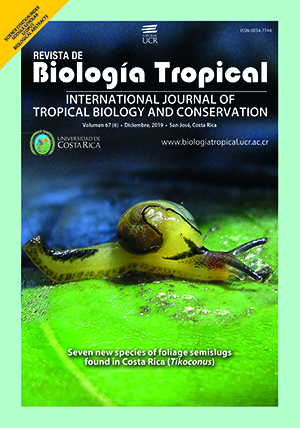Resumen
La edad y crecimiento de la sardinilla peninsular en peligro de extinción, Fundulus lima, en el río La Purísima, Baja California Sur, Mexico, fueron determinadas por métodos no invasivos para 802 individuos capturados de octubre 2002 a julio 2004. El crecimiento somático de F. lima fue de tipo alométrico (b> 3.0) en todas las poblaciones estudiadas, variando de 3.126 (Ojo de Agua) a 3.420 (El Pilón). Tres clases de edad (0, 1 y 2 años) fueron reconocidos, de las cuales la edad 1 fue la más frecuente (49 %) durante los muestreos. El método polimodal basado en la distribución de frecuencias de tallas observadas también identificó tres clases de edad. Las longitudes totales retrocalculadas en edades previas basadas en los incrementos de crecimiento en escamas fueron 38.61 y 68.81 mm para individuos de 1 y 2 años, respectivamente.
##plugins.facebook.comentarios##

Esta obra está bajo una licencia internacional Creative Commons Atribución 4.0.
Derechos de autor 2019 GORGONIO RUIZ-CAMPOS, Violeta Belinda Arista-Palacios, Asunción Andreu-Soler



